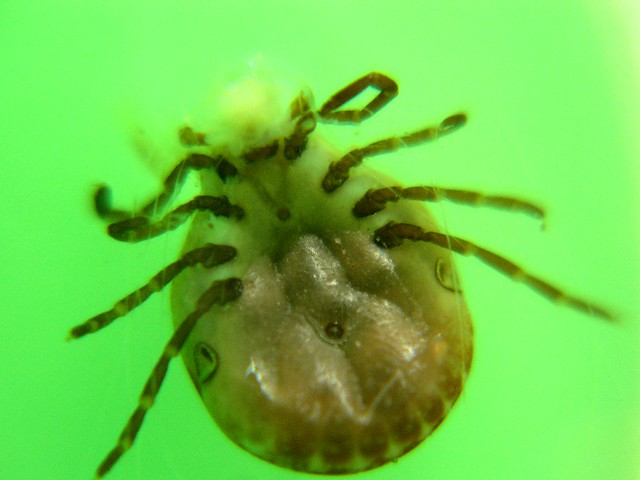 |
| Ancylostoma caninum, a type of hookworm, attached to the intestinal mucosa. (Photo credit: Wikipedia) |
One of the easiest ways for puppies and dogs to pick up worms is by them playing or eating their feces matter. It is important to pick up your dogs' poop in the backyard all the time, on a regular basis, can keep it clean and safe.
Hookworms: Hookworms are not visible to the naked eye. Hookworms hide in the intestines and can be transferred to humans. Hookworms are small thin worms that hook onto the intestinal wall and they suck the blood from the puppy or dog, which can cause anemia and even death.
These worms actually have teeth, that cause bleeding in the intestines. Hookworms will grow to full maturity in the intestines. Hookworms can be spread from the mothers' mile right to the pups, to the whole family needs to be dewormed.
The worms like to live in feces matter, and contaminated soil, like the dirt you might have in your backyard your dog likes to play in maybe. If your dog has hookworms, some signs might include anemia, weight loss, diarrhea, bloody stools and very low energy. Hookworms could be present, and you won't be able to see them so you would need to take your pet, or a stool sample to the vet for a diagnosis.
Roundworms: Roundworms are the most common type of worms in puppies. Just like hookworms, roundworms attack the intestines and can cause a pot-bellied look, on your puppy or dog.
Puppies can get roundworms from their mothers' milk, or even from the uterus, before birth. They can also pick up the eggs from the contaminated soil outside since roundworm eggs can live up to several years outside in dirt and soil.
Roundworms can be transmitted to humans, just like hookworms, so it is vital to eradicate them as soon as practical. Roundworms will live in the intestines, and will grow to adulthood, and lay eggs that will produce more roundworms.
Roundworms can be seen by the eye in your dogs' vomit or stools, and is up to 7 inches long, and will resemble spaghetti somewhat. When your puppy or dog starts to get to many of these roundworms, you will see the pot-bellied appearance on them, and you may notice vomiting, diarrhea, and weight loss.
Whipworms: Whipworms are one of the more harder worms to kill. Whipworms are long skinny shaped worms that live in the dog's colon, and you can not see them with your eyes.
Whipworms will also attach to the intestines, and cause intestinal bleeding inside your dog. Signs of whipworms could be weight loss, anemia, diarrhea with some blood or a gooey mucus type substance in it, and just a lack of energy.
Tapeworms: Tapeworms get their name because they look like flat Scotch tape. Tapeworms attack the intestines and can be seen by the naked eye. The tapeworms will look like a rice appearance in your dogs' stools.
Tapeworms can be broken into pieces, and sometimes you can see the worms on your dogs' anus and stools, still moving around, with your naked eyes.
Tapeworms are not transmitted directly to humans from dogs, but a human could still be infected. Some signs your dog might have tapeworms would be weight loss, uncontrollable itching around the anus area, lots of pain if your touch their abdominal area, and vomiting.
Heartworms: Heartworms are spread by mosquitoes, when mosquitoes are active, and go from one dog to the next. Heartworm can kill your dog if left untreated, and it is easily preventable. There are no symptoms of heartworms until it is almost fully advanced.
The heartworms destroy the muscle and tissue of the heart and can cause heart failure, and kill your dog. One of the best measures these days is to consult your vet for heartworm guard, and you can easily find medications online for your dog's heart since starting them on a medication is the best practice.
Vince Stead is the author of over 20 books. He has been raising dogs for over 25 years.
You can find his books at places like Amazon, Barnes and Noble, and even his own website at http://www.vincestead.com You can get every one of his books as a book at regular price, and you also get them as digital downloads for only $2.99 each. Article Source: EzineArticles |













